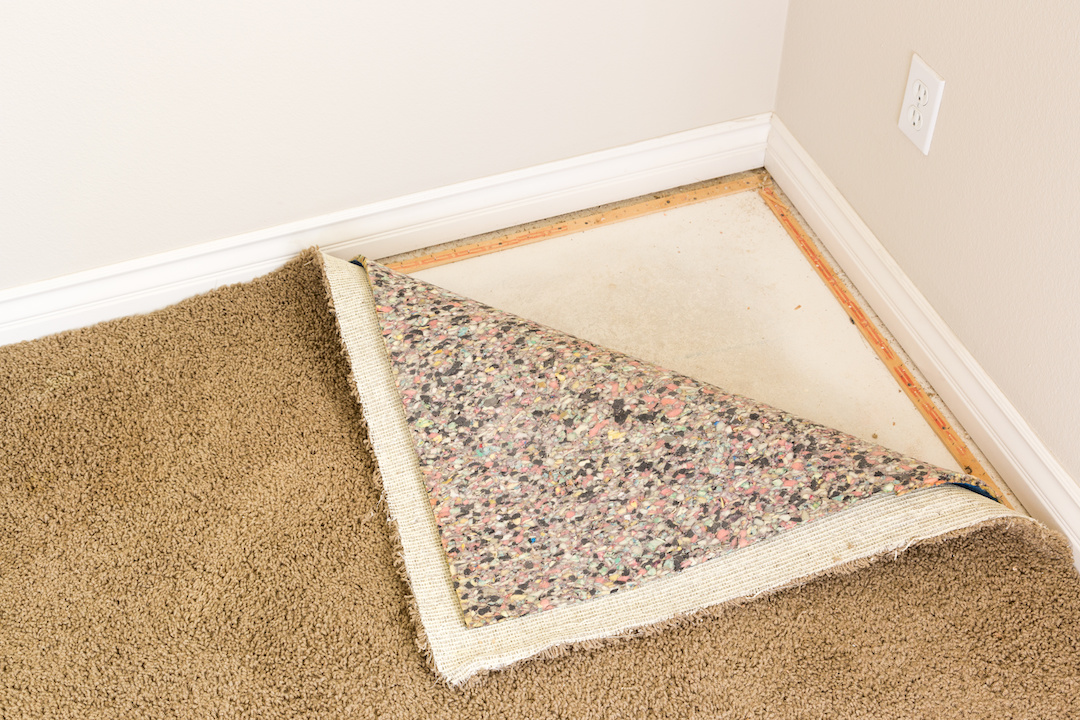People add carpets and rugs to their rooms and halls to create a cosy and comfortable ambience. However, they are very prone to catching moldy smells. Additionally, there can be various reasons for it. The two main ones include either moisture exposure or lack of ventilation.
Well, that’s why people are often looking for solutions on how to get mildew smell out of carpets. Hence, let us waste no further time and move to the steps that can help individuals eliminate the moldy smells from their carpets without professional help.
Table of Contents
Six step procedure on how to get mildew smell out of carpet
Listed below is a tried and tested procedure that can naturally solve the problem of mildew smell in carpets.
Step 1- Identify the source of the moldy smell and eliminate it.

The first step in the process of how to get mildew smell out of carpet is to locate the source causing it. There could be one or more sources. These may include water leaks from walls and ceilings, wet carpets, etc. Water damage and leaks under the furniture could also be one of them. Once you have identified the source, it is now time to eliminate it. Get every water damage and leak fixed. Make sure the area is dried properly. Also, eliminate every necessary element leading to the moldy smell in your carpets.
Step 2- Vacuum the carpet!

After the carpet area is completely dry, it is time to vacuum it. Gradually clean the entire carpet. Make sure you don’t miss any portion. You can also select and vacuum certain areas, as per your convenience. However, we advise you to clean the filter after finishing one place. This will eliminate the transfer of mildew spores back to the carpet.
Do not lose hope or stop the process in between if you don’t notice any reduction in the moldy smell. To completely eliminate the poor odour from your carpet, prefer following all the further steps mentioned below.
Step 3- Clean the carpet with a natural or synthetic cleanser

Once the carpet is thoroughly vacuumed, it is now time to sanitize it. To clean the carpet, you can either use special carpet cleaners. Or, instead, natural home remedies can also be used to accomplish the same. We are listing below some methods that can be utilized to eliminate the mildew smell from your carpet.
1. Prepare a vinegar and water solution to spray on the carpet.
By mixing vinegar and water in a ratio of 1:1, you can prepare a natural cleaning solution for your home. Simply spray this solution all over your carpet. You might notice a very unpleasant smell at first. This is because vinegar itself has a strong smell. This becomes worse when it comes in contact with the mildew smell present in the carpet. However, if you let the vinegar solution sit overnight, the smell will eventually evaporate.
2. Utilize rubbing alcohol to wave off the moldy smell.
Rubbing alcohol is another cleaning tip included in how to get mildew smell out of carpet. However, there are certain limitations to it. Rubbing alcohol can only be used when the carpet is completely dry or slightly damp. It won’t give any effective results if applied on wet or too damp carpet. Also, rubbing alcohol can only be used for small to medium-sized carpets and rugs.
3. Sprinkle baking soda or salt on the bad-smelling carpet
Sprinkling baking soda or salt is basically a dry method of getting a moldy smell out of the carpets. All you need is a good quantity of either baking soda or salt, and sprinkle it on a dry or damp carpet. Make sure you let the powder sit for at least eight to ten hours for best results. Once done, thoroughly vacuum the carpet. You will notice a considerable decrease in the mildew smell.
4. Utilize hydrogen peroxide to get rid of mildew smell.
Hydrogen peroxide is another useful home remedy that can help people looking for answers to how to get mildew smell out of carpet. It is a bleach that helps eliminate the moldy smell when diluted with water. However, the only limitation of using hydrogen peroxide is it can de-color your carpets. This is because it is a very strong bleach. Hence, using it on the entire carpet can be risky.
Step 4- Time to scrub the carpet

You will have to select one particular method from all the cleaning methods listed in step 3. This will let you move forward and let you decide your next step. Additionally, you will now have to purchase a carpet cleaning shampoo.
There are various carpet cleaning shampoos available in the market. One can also purchase them from online shopping websites like Amazon. They are specially designed to clean the carpets. Hence, we suggest you buy the best one to eliminate the moldy odour from your rugs and carpets.
Once you have used a cleaning method to sanitize your carpet and purchased a cleaning shampoo, it is time to scrub it. You can use small or medium-sized scrubbers for the same. However, you will only be able to cover smaller areas when utilizing small scrubbers. If you wish to cover larger areas, you can either purchase or lease an electric carpet scrubber.
Step 5- Let your carpet dry completely

As mentioned previously, water or any other liquid is one main reason for the moldy smell in carpets. Hence, people should ensure their carpet is completely dried while getting rid of the same. This is one of the main steps of how to get mildew smell out of carpet. However, people often tend to ignore this. Well, this is the reason the mildew smell is not eradicated from the carpets. Instead, it keeps on building up.
Different ways to speedily dry up your carpet
There are different ways which can help individuals completely dry their carpets. Some of them are mentioned below. However, we suggest you select the method which ensures that the carpet will dry up speedily. This is because there are chances of mildew growing instead of being eliminated if the carpet is left wet for too long.
- Leave the doors and windows open. This will ensure proper ventilation.
- Use dryers and blowers.
- Utilize a portable fan to ensure all different areas are dry.
- Hang your carpet on a wall or door, depending on its size.
Additionally, we suggest you avoid walking on the carpet while drying. Foot traffic might deepen the mildew smell.
Step 6- Time to deodourize the carpet

Once the carpet is sanitized, scrubbed and dried, it is now time to deodourize it. This is the last step of the how to get mildew smell out of carpet procedure. And guess what? We have a home remedy for this as well. Baking soda it is!
You can use baking soda to deodourize your carpet. It is a natural odour absorbent. Hence, simply sprinkle baking soda all over the carpet in the required quantity. For best results, let the soda sit on the carpet overnight. Or else four to five hours are also more than enough.
Additionally, you can create a natural deodourizer by mixing baking soda with crushed cloves and lavender. Once done, thoroughly vacuum the carpet. And that’s it. The mildew smell from your carpet has left!
When should I reach out to professional carpet cleaning services?
Although this is a tried and tested procedure for getting rid of the mildew smell from carpets, it might not prove effective. There could be various reasons for the same. Additionally, the severity of the mildew smell is one factor that might prove these steps ineffective. In this case, individuals are left with no option other than reaching out to professional cleaning agencies and service providers. Professional carpet cleaners are the only hope to make the way out of the mildew smell from your expensive rugs and carpets.
Ways to prevent carpets from attracting mildew smell
If individuals focus on preventing moldy odour from entering their carpets, they will never have to search for how to get mildew smell out of carpet. Listed below are some preventive measures that will ensure that mats do not catch mildew smell.
- Vacuum your carpets regularly.
- Don’t let the spills dry up. Clean them as soon as possible.
- Make sure the humidity level of your room isn’t too high.
- Lay your carpets in a room with proper ventilation.
- Lay a padding before laying your carpet. Make sure the carpet padding has antimicrobial properties.
Winding up
How to get mildew smell out of carpet isn’t rocket science. It is indeed a time-consuming process, but not an impossible one for sure. Individuals with good patience levels can apply these steps to get rid of the moldy smell in their rugs. This is a natural process that can be carried on using things that are easily available at home. On the other hand, it is also an economical way to eliminate odour. For individuals who do not have much time and patience, they can always opt for professional carpet cleaning services.
Frequently Asked Questions (FAQs)
What are the reasons for the mildew smell in carpets and rugs?
There are various factors that lead to moldy smell in carpets and rugs. The two most common ones are completely opposite of each other. The first reason is the carpet being exposed to moisture. The other one is the lack of ventilation in the room where the carpet is laid.
How do you naturally get the mildew smell out of the carpet?
There are different methods that can help in removing moldy smell from carpets and rugs. These include washing the carpet and completely drying it. Utilizing cleaners like hydrogen peroxide, baking soda, vinegar, etc. Additionally, people can also employ all these methods together for best results.
How do I prevent my carpet from catching a moldy smell?
There are different ways that individuals can consider to prevent their expensive mats and rugs from attracting mildew smell. Some of them include eliminating their carpets from exposure to moisture, laying carpets in a room with proper ventilation, preventing spills and cleaning them immediately, etc. Individuals who follow these preventive measures will never have to look for how to get mildew smell out of carpet.
Will a small scrubber help eliminate the mildew smell in my small carpet?
Yes! A small brush is more than enough for scrubbing your small carpet to remove the moldy smell present in it. However, this small scrubbing brush won’t work in the case of a big carpet. This is because you won’t be able to cover larger areas. As a result, it will cost you a lot of time.





